We explain what Hinduism is, how it was originated and the sacred texts it uses. Also, what are its characteristics and practices.
What is Hinduism?
Hinduism or Hindi religion is one of the world’s great religions , originating from the Indian subcontinent .
It is one of the oldest and most complex in existence, to the point of lacking a unique and structured body of beliefs or practices, being rather a way of life or a philosophy of life , which involves different forms of cultural practice.
They have all been included under the name of Hinduism very recently, by the British colonists in the first decades of the 19th century.
Despite being the majority religion in several countries and having more than a billion adherents in the world, its inherent complexity means that Hinduism is better understood through its different local manifestations than as a global and organized whole.
In fact those who practice it prefer the Sanskrit term dharma , which roughly translates as a philosophy of life , something much broader than a religion.
Those who adhere to Hinduism are called Hinduists or Hindus . This last term should not be confused with the demonym of India, which according to the Royal Spanish Academy can be both Indian and Hindu , but has nothing to do with the practice of one religion or another. Seen in this way, one can speak of Muslim Hindus or Christian Hindus, for example.
Origin of Hinduism

Hinduism emerged as the mixture of a series of ritual and religious practices originating in the Indian subcontinent.
Much of those practices stem from the ancient Indian religion , Brahmanism.
The origins of Brahmanism, also known as the Vedic religion , are unknown, but it is known that it culminated around the 6th century BC. c.
This root is common to both Buddhism (born in the 4th century BC) and Hinduism, which would have come into existence around the 3rd century AD. C. _
What are the main beliefs of Hinduism?
Hinduism encompasses a series of ritual practices that involve prayer, meditation and annual pilgrimages , according to what is stipulated in the four purushartha or life goals (of a male):
- Dharma. Ethics and obligations.
- Artha . Prosperity and work .
- Kama. desires and passions.
- Moksha. Liberation, freedom and salvation.
These four “commandments” serve as a vital guide to the Hindu and to a large extent supported the configuration of traditional Indian society .
Other aspects, shared with religions such as Buddhism and Jainism, include the notions of Karma (action, intent and consequences) and Samsara (the existential wheel of reincarnations).
Human salvation , in this context, is through enlightenment, attainable through the practice of honesty, patience, compassion, self-control, and tolerance.
Who founded Hinduism?
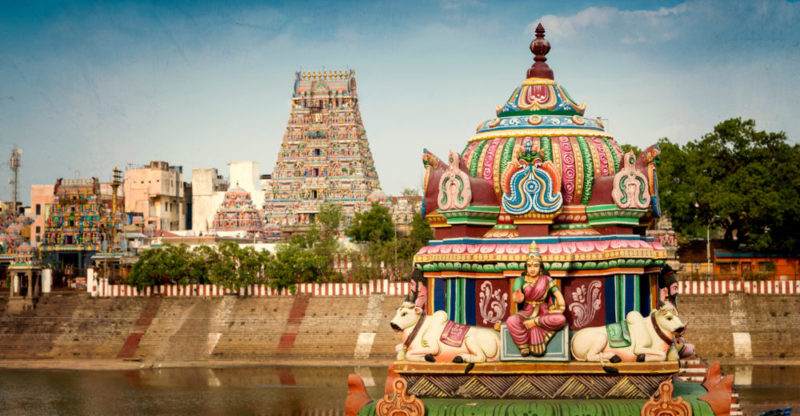
Hinduism does not have a specific founder , since it is a set of religious manifestations instead of a unitary religion.
It is the result of numerous processes of cultural synthesis or syncretism , which is why it does not have a church , nor a unified body of practices, rituals or beliefs.
Multiple sacred texts of Hinduism
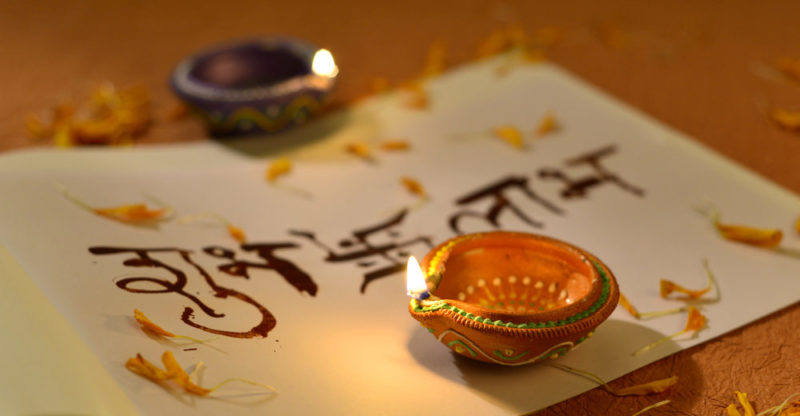
Hinduism lacks a single, central body of beliefs, so it does not possess a single sacred text either , but rather a set of ancient scriptures in two sets:
- Shruti . Its name comes from Sanskrit (“heard”) and that Hinduism does not interpret, but follows to the letter. These texts are:
- The four Vedas :
- Rig-veda. The oldest text of Indian literature , dating from the fifteenth century BC. C.;
- Layur-veda. The Book of Sacrifices, taken from the Rig-veda ;
- Sama-veda. The Book of Hymns, also drawn from the Rig-veda ;
- Atharva-veda. The Book of Rituals, added several centuries later.
- The Upanishads. Mystical and philosophical meditations from the 6th century BC. c.
- The four Vedas :
- Smriti . Other sacred texts that are interpreted or read in an inspiring or allegorical way. Its name comes from Sanskrit (“the remembered”).
- The Mahabharata. An epic text from the 3rd century BC. C. which includes the religious text Bhagavad-guita .
- The Ramayan. The epic narrative of the god-king Rama, dating from III a. c.
- The 18 Puranas. Histories written between the III centuries a. C. and XI d. c.
- The Ayur-Veda texts . Treatises on herbalism and traditional medicine.
The four basic truths of Hinduism
The purushartha or vital truths of Hinduism are, as we said before, dharma (religious duties), artha (riches), Käma (pleasures) and Moksha (liberation from the cycle of reincarnation or Samsara ).Based on these four basic precepts, the Hindu tradition understands the ashram or stages of the life of a Brahmin , a member of the priestly caste of the Brahmanical religion:
- Brahmacharya. celibate student
- Grihastha. Married life.
- Vanaprastha. Retreat to the forest .
- Sannyasa. Complete renunciation.
From there would also arise the four castes or traditional social classes of Indian society (from the highest to the lowest):
- Brahmana. Teachers and priests.
- Kshatriya. Administrators and soldiers.
- Vaishya. Farmers and merchants.
- Shudra. Craftsmen and workers.
Gods of Hinduism
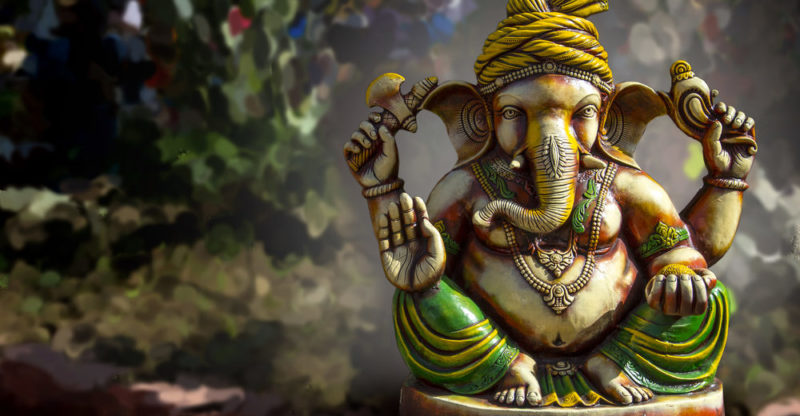
Although there are monotheistic Hindu slopes , many others are polytheistic and venerate an enormous diversity of gods and deities, among which the following stand out:
- Brahma. Creator God of the universe and who embodies its eternal and absolute character, part of the Hindu trinity ( trimurti ). He is represented as a bearded man with four arms.
- Shiva. God destroyer of the universe, he is part of the trimurti along with Brahma and Vishnu, whose presences balance everything that exists. He is the husband of Parvati and the father of Ganesha and Kartikeia. He is depicted as a four-armed yogi.
- Ganesha. God of wisdom, represented as a human body with the head of an elephant and four arms. He is one of the main gods in the Hindu pantheon.
- Vishnu. The god who preserves or maintains the universe, is part of the trimurti with Brahma and Shiva. According to the texts, it manifests itself in different incarnations such as Krishna, Rama, Hari or Narayana. He is represented as a bluish man with four arms.
- Kali. One of the consorts of the god Shiva, considered the universal mother, destroyer of evil and demons. She is depicted as a blue-skinned woman with four arms, one of which holds a bloody sword.
Main streams of Hinduism
The classical division of Hinduism assumes the existence of six dársanas or philosophies , studied through two prominent schools: yoga and vedänta .
At the same time, Hinduism can be classified based on the main deity of worship, into four streams:
- Gaudí Vaisnavism. Who worships Vishnu.
- Shaivism. Who worships Shiva.
- Shaktism. Who worships Devi.
- Smartism. Who worships the five main deities equally.
Where is Hinduism practiced?
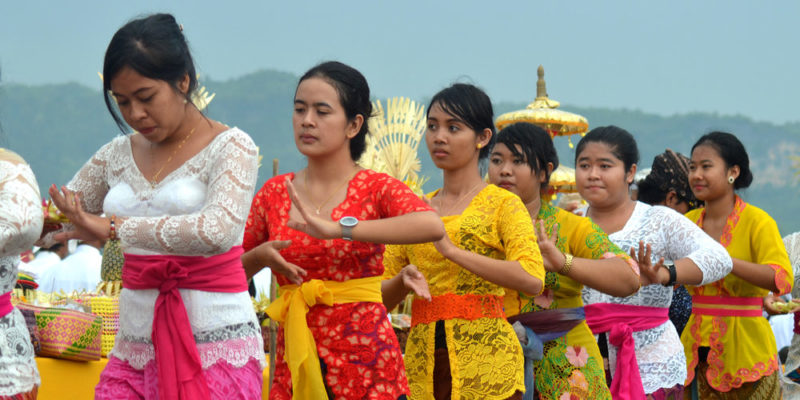
Hinduism is practiced as the majority religion by 80.5% of the population of India and 80% of Nepal , as well as the Island of Bali in Indonesia and the African island of Mauritius.
There are also numerous practitioners in Pakistan, Bangladesh, Afghanistan, Bhutan, Burma, Cambodia, Indonesia, Malaysia, Sri Lanka, and Thailand.
There are also Hindu minorities in Europe and the United States , as well as in Panama and Trinidad and Tobago.
Do they have a religious leader?
There is no figure that globally exercises the religious leadership of Hinduism. In part because it is a heterogeneous set of traditional practices. There is no proper Hindu church.
Commandments and prohibitions of Hinduism
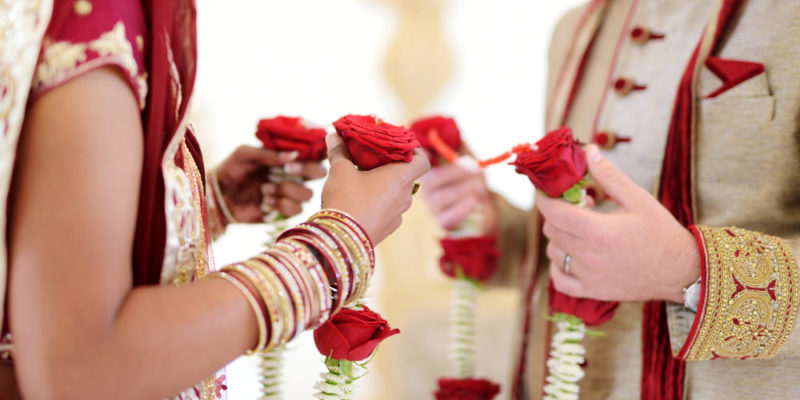
The traditional commandments of Hinduism have to do with the traditional model of society and with reverence for the different gods, for example:
- It is forbidden to eat meat, especially beef (considered a sacred animal ).
- Marriage between individuals belonging to different castes is prohibited.
- Enlightenment must be pursued through rejection of the material world and the eternal cycle of reincarnations.
- Offerings must be made on the altar to major deities, as well as minor ones, depending on the cult practiced.
The above content published at Collaborative Research Group is for informational and educational purposes only and has been developed by referring reliable sources and recommendations from technology experts. We do not have any contact with official entities nor do we intend to replace the information that they emit.














